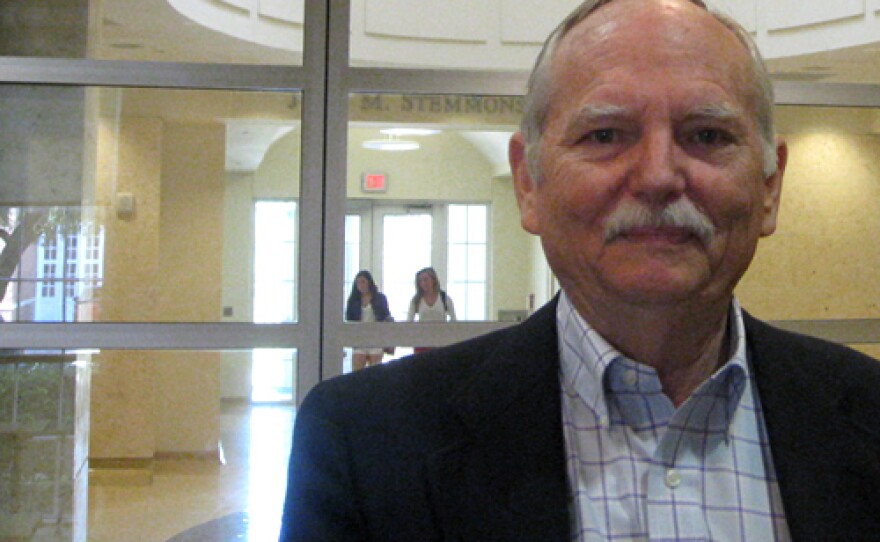Scientists say there’s enough wasted energy in Texas to power our lights for centuries. KERA’s Bill Zeeble reports on SMU researchers and a business who are turning waste heat from oil and gas wells into electricity.
The CEO of Gulf Coast Green Energy, Loy Sneary, says the profitable premise of his business is pretty simple. He says 60 percent of the world’s energy is in the form of waste heat. He wants to capture it from oil and gas well sites, then turn it into electricity.
Sneary: We’ve got more electricity that could be generated than all the coal fired power plants, natural gas fired power plants and nuclear power plants in the world. That’s what the potential is.
Sneary says there’s huge potential in Texas, thanks to thousands of oil and gas wells. Deep under ground, the earth is already hot. Drive a diamond drill down into hard rock or shale, and the bit gets even hotter. Liquid cools it. That’s where Sneary’s Green Machine comes in. Smaller than a compact car, the square box channels that abundant hot well water through one pipe that’s next to another filled with refrigerant. That refrigerant boils and the steam generates electricity.
Sneary: It’s not rocket science but it is cutting edge. It has a low boiling point. It’s around 54 degrees is when it starts boiling. So we can take these lower temperatures, hot water sources, transfer the heat, because the heat is going to go the cold source, right? And then once that refrigerant is expanded and pressurized, from there on it’s just like a steam turbine.
Last year, Sneary even connected his green machine to SMU’s boilers and converted the school’s wasted heat into electricity.
Sneary says his Green Energy machine can generate enough electricity to power up to 70 homes an hour, at about two cents a kilowatt hour. Southern Methodist University Geology professor David Blackwell says that’s just the beginning.
Related Links:
SMU's Geothermal Labs
Gulf Coast Green Energy
Google's Enhanced Geothermal Systems Page
Blackwell: That’s why there’s such a large potential for the application of these types of systems. Because the heat used at low temperature is enormous. So essentially it’s removing the amount of heat wasted into space and generating electrical power with it. So we’re increasing the overall efficiency of the system.
SMU’s Geothermal Lab Coordinator, Maria Richards, says her lab’s custom temperature maps help Sneary find hot spots he can tap. The school and company have partnered for several years.
Maria Richards: …There was really so much heat in the gulf coast. That made us realize that by working with the oil and gas wells, it was an ability to tap into those resources.
Loy Sneary: The research that the SMU Geothermal Lab has done has allowed us to target the areas where there is adequate heat in these oil and gas wells to be able to be utilized.
Sneary is negotiating with drillers in Texas, has a project in West Virginia, and is looking at other states too. He says the technology is efficient and green, because it’s emission free. And given the growing number hot spots pinpointed by the geothermal map, he sees renewable energy sources for years to come.








